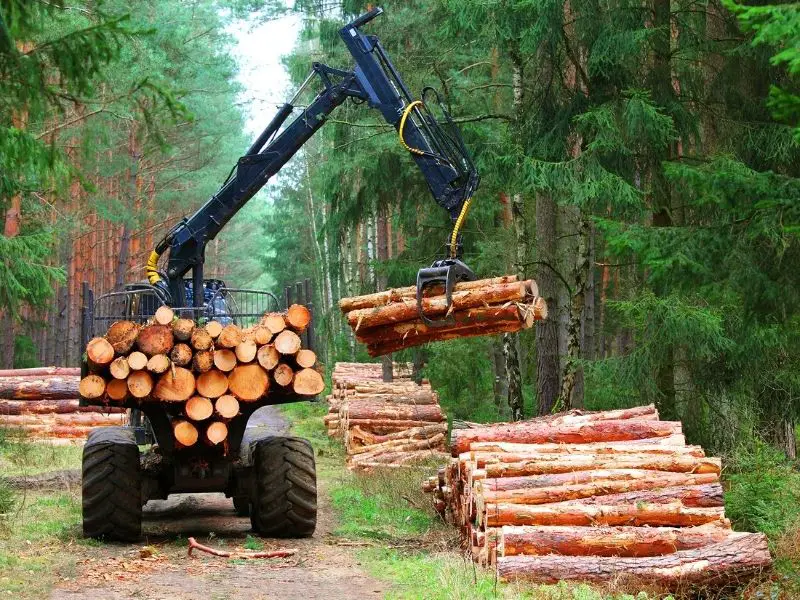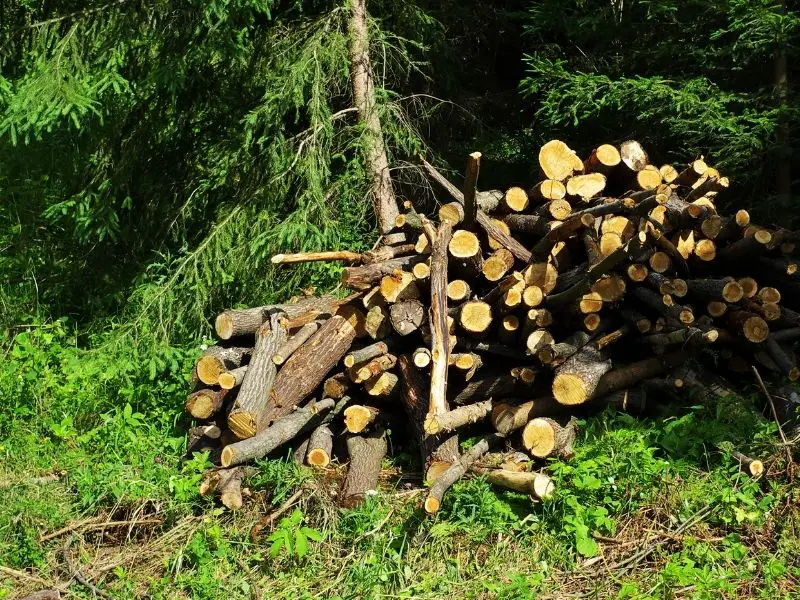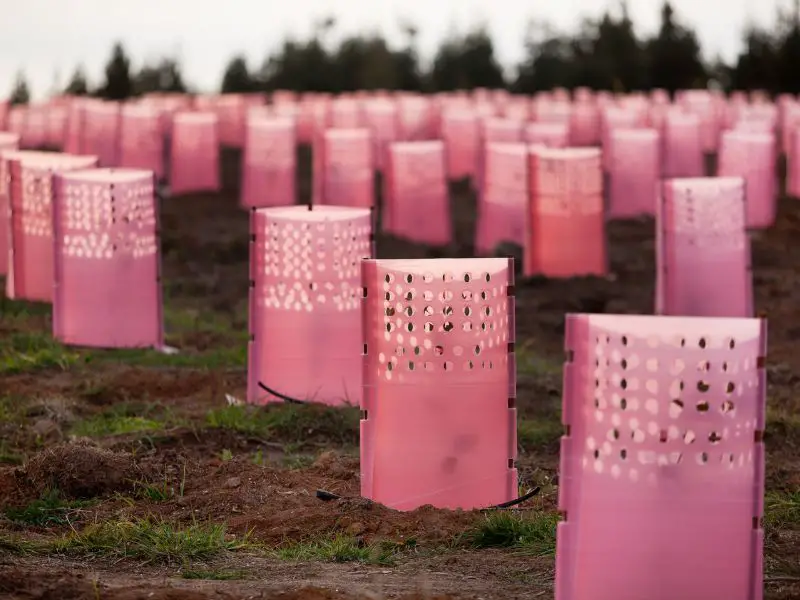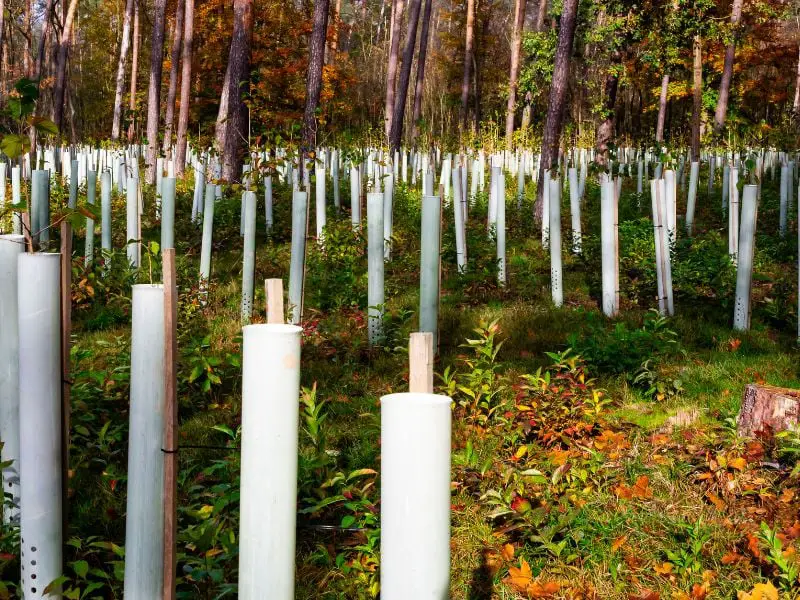You may be shocked to find that timber harvesting is one of the most effective strategies to maintain the health of woodlands. After all, chopping down trees does not seem to be an effective means of protecting them.
But a well-managed, sustainable wood harvest involves more than just felling trees for their economic worth. It consists of developing a strategy that promotes your woodlands’ regeneration and long-term health.
By maintaining your stands open and healthy, improving animal habitats, and fostering new growth, a sustainable timber harvest can conserve everything you appreciate about your woods while providing an income.
In fact, many people utilize this revenue from timber harvesting to fund programs that restore the forest’s environment. This article will dive into what it means to harvest timbers sustainably and some of their benefits.

What Is Sustainable Timber?
Sustainable timber is wood that has been responsibly harvested. This involves planting a replacement tree whenever one is chopped down for use. However, “Sustainable Forestry” requires more than just replacing trees when cut; it also entails ensuring that there is no physical harm to the surrounding ecosystem or its natural flora and wildlife.
What Does It Mean to Have Sustainable Timber Harvesting?
The forest’s water, soil, plant species, and animal populations must be protected for biodiversity. This includes taking measures to reduce soil erosion and protect water sources, eliminating chemical pesticides, properly disposing of waste, protecting native tree species, and preserving genetic diversity.

Sustainable timber harvesting also includes setting aside portions of their properties as protected areas where logging is prohibited (such as steeply sloping forestland that provides habitat for critical wildlife species and serves a cultural or spiritual function in the local community) and more.
Protect Natural Forest Against Deforestation
The FSC standard mandates that forest managers prevent the destruction of natural forests, lessen the likelihood of forest fires, and provide special attention to the preservation of “high conservation value forests.” Forests that meet the basic needs or define the cultural identity of forest communities, contain significant concentrations of biodiversity, are located in endangered ecosystems, are critical providers of ecosystem services, and are referred to as “forests of exceptional significance.”
Excellent Management Plan and Good Harvesting Strategy
Logging can take in many different ways, from selective harvesting to small-scale clear-cutting that, in temperate forests, can look like fires or landslides. To become FSC-certified, forestry operations must put in place a clear management plan that says how many trees can be cut down per acre and how often this can happen, based on how fast the species in that ecosystem grow and grow back. The goal is to harvest in a way that gives these species a chance to return, restore, or even improve the ecological health of the forest.
Tree Plantations Plays A Key Role
To be considered sustainable, tree plantations that arose from forest conversion after November 1994 are not eligible for FSC certification unless in exceptional circumstances. Plantations established on deforested or degraded land may restore ecosystem health while meeting the demand for forest products, relieving some of the stress on the world’s natural forests. To be recognized as sustainable by the Forest Stewardship Council (FSC), plantations must follow a management strategy that prioritizes preserving, restoring, and conserving natural forests.

Follow Reduced Impact Timbering Practices
People often think of logging as a bulldozer clearing out trees, but it is possible to cut down trees without hurting other parts of a forest. Using techniques with less damage, loggers can cut down and remove trees without harming other trees in the stand. This method keeps erosion, waste, and carbon emissions to a minimum.
Educate and Keep Employees Healthy
A forestry company that does not safeguard its employees is unethical and unsustainable. Well-trained and healthy employees are vital for maintaining the safety and efficacy of these businesses. In an analysis of community-run forestry firms in Brazil, certified businesses better safeguard their employees than their noncertified counterparts.
Accredited enterprises were four times more likely to have participated in a safety course. 94 percent of these businesses offered regular medical exams to their workers. All the certified enterprises washed and properly stored their protective gear; and 100 percent of the certified enterprises offered medical attention to their employees when injured on the job, which is four times as many as noncertified enterprises.
Respect Local Communities and Support Economic Development
To be sustainable, forestry businesses must act in sync with their environment. This includes the natural habitats in which they reside and the human neighbors with whom they coexist. It also signifies that a certified business must support a community’s social and economic development by providing job opportunities to its members and paying indigenous communities for the traditional knowledge they provide about forest species and activities. These activities are not only socially responsible but also environmentally beneficial. Providing locals with employment, for instance, might decrease the motivation to participate in damaging but lucrative activities such as poaching and illicit logging.
Provide Good Income and Profitability
Sustainable forestry should benefit its practitioners economically. It’s no surprise that the actions that help a business obtain certification are the same ones that involve active management of its forestland, training workers on how to operate safely and effectively, and minimizing staff turnover. Thus, these processes may also contribute to economic success.
Benefits of Timber Harvesting
1. Encourage Forest Regeneration
Timber harvest is a vital forest management practice that helps regenerate forests. Timber harvest helps remove dead trees from the forest, allowing younger trees to grow in their place, and increasing the forest’s overall health.
2. Promotes Biodiversity
Timber harvests may influence a stand’s overall composition by strategically identifying which trees to harvest. Timber stands comprising a diverse range of native tree species at various age classes may support a diverse range of animal species.
Related: Top Hotspots in Biodiversity, How Is Biodiversity Measured, Threats to Biodiversity
3. Increase Wildlife Habitat
Fallen, dead tree remnants known as coarse woody debris (CWD) improve local wildlife by providing more food, shelter, and cover. Insects thrive well in fallen and rotting CWD, an essential food source for several animal species. Small mammals, reptiles, and amphibians may also inhabit and be found under CWD. Additionally, fallen tree canopies, limbs, and brush piles provide shelter and cover to several animal species.
4. Enhance Timber Quality and Appreciate Value
If trees are marked carefully and the harvest is handled sustainably and ethically, wood may be collected every 10 to 15 years. This results in an ongoing source of income, which is beneficial to the general health and productivity of the forest stand. As a forest development technique, timber harvests may be used to lower stocking levels, modify the species composition of the stand, and remove any poorly formed, diseased, or overmature trees.

5. Increase Productivity and Growth
Overstocked and densely packed forests are less productive and effective because of higher competition for space, water, sunshine, and other essential resources. The trees left after harvesting timber, have good access to critical nutrients and space because of thinning, which permits them to grow more quickly, productively, and effectively. Thinning is accomplished via the use of sustainable timber harvest.
Final Thoughts
Timber harvesting has been conflictive for a long time. On the one hand, it’s an essential source of wood used by people worldwide, but it’s not without its side effects.
Timber harvesting is vitally essential to the economy, with 100 billion board feet of timber harvested yearly in the United States alone. However, paying attention to environmental impact can help ensure that forests function optimally to support a healthy environment.
Forests are complex ecosystems that play several significant ecological roles, sequestering carbon and providing clean drinking water. When cutting trees, you need to pay attention to more than just the bottom line.

